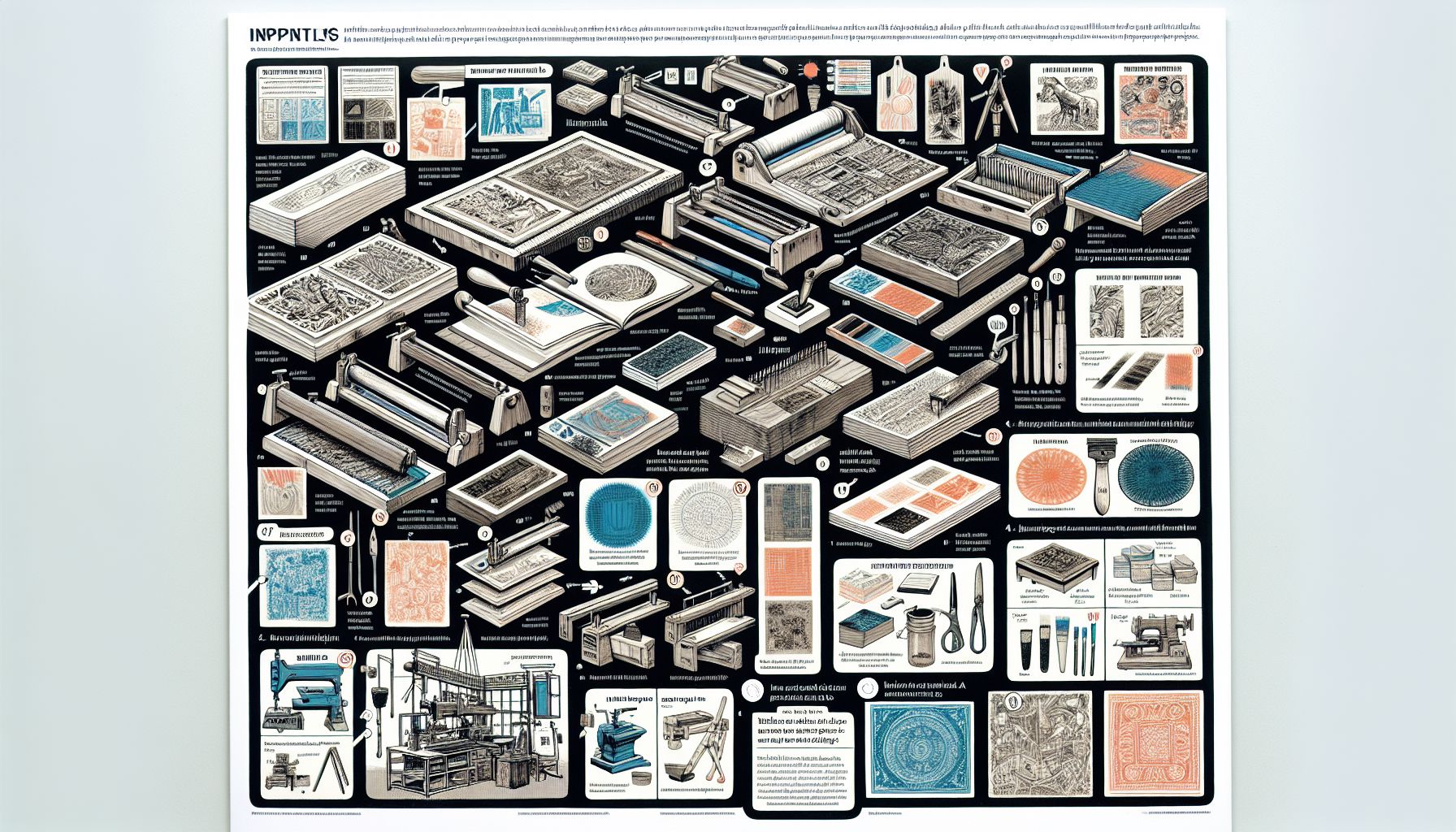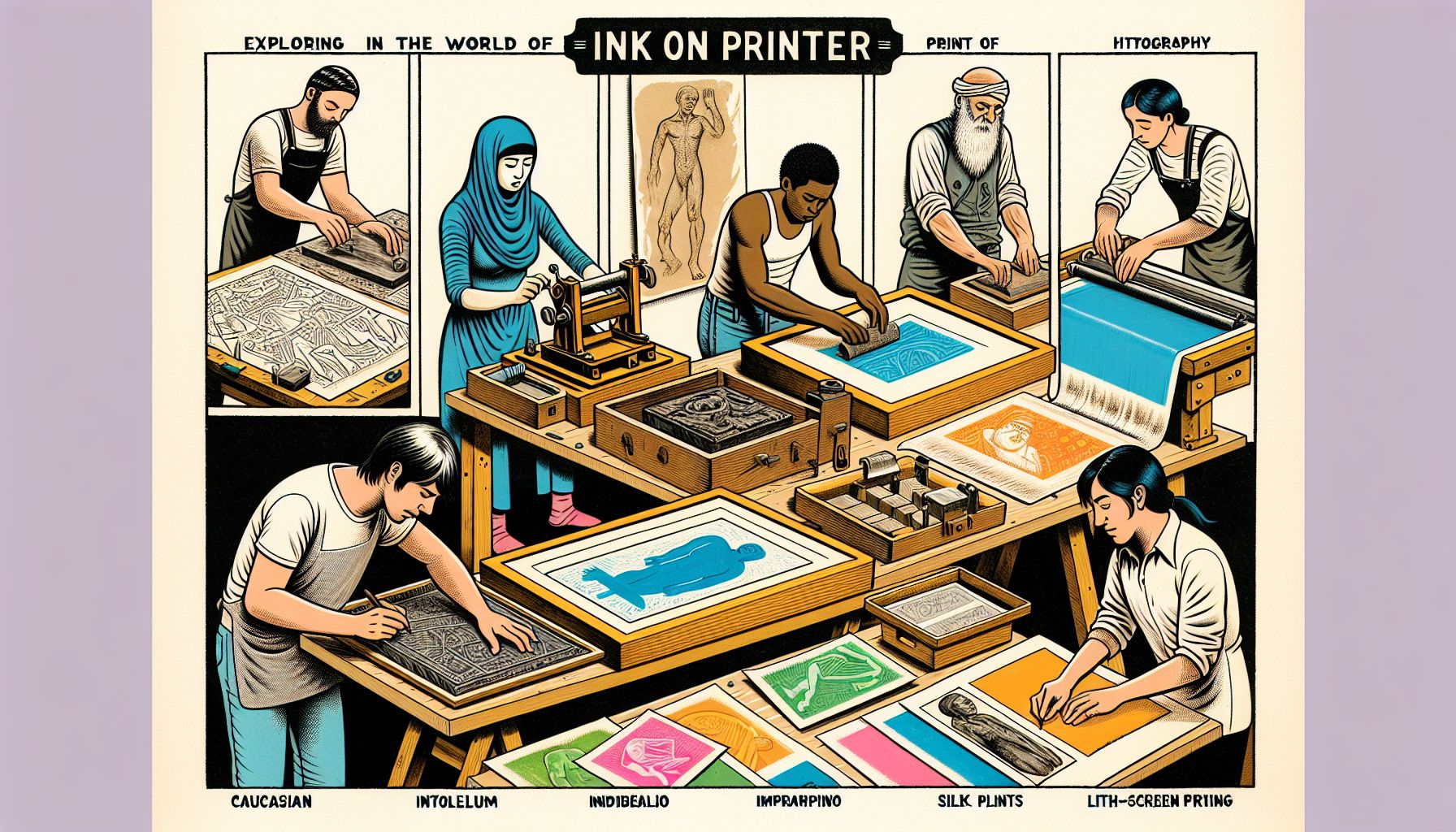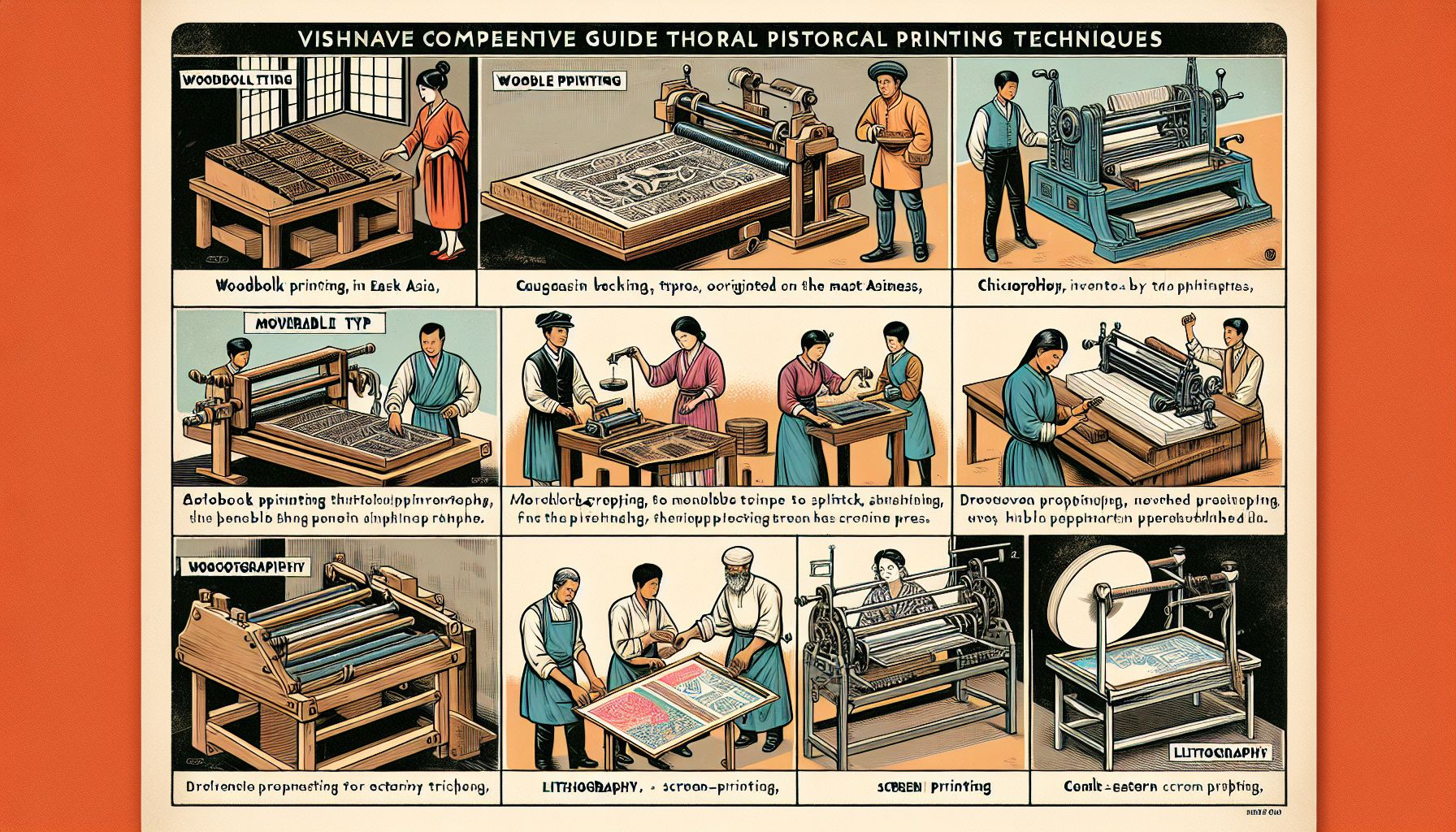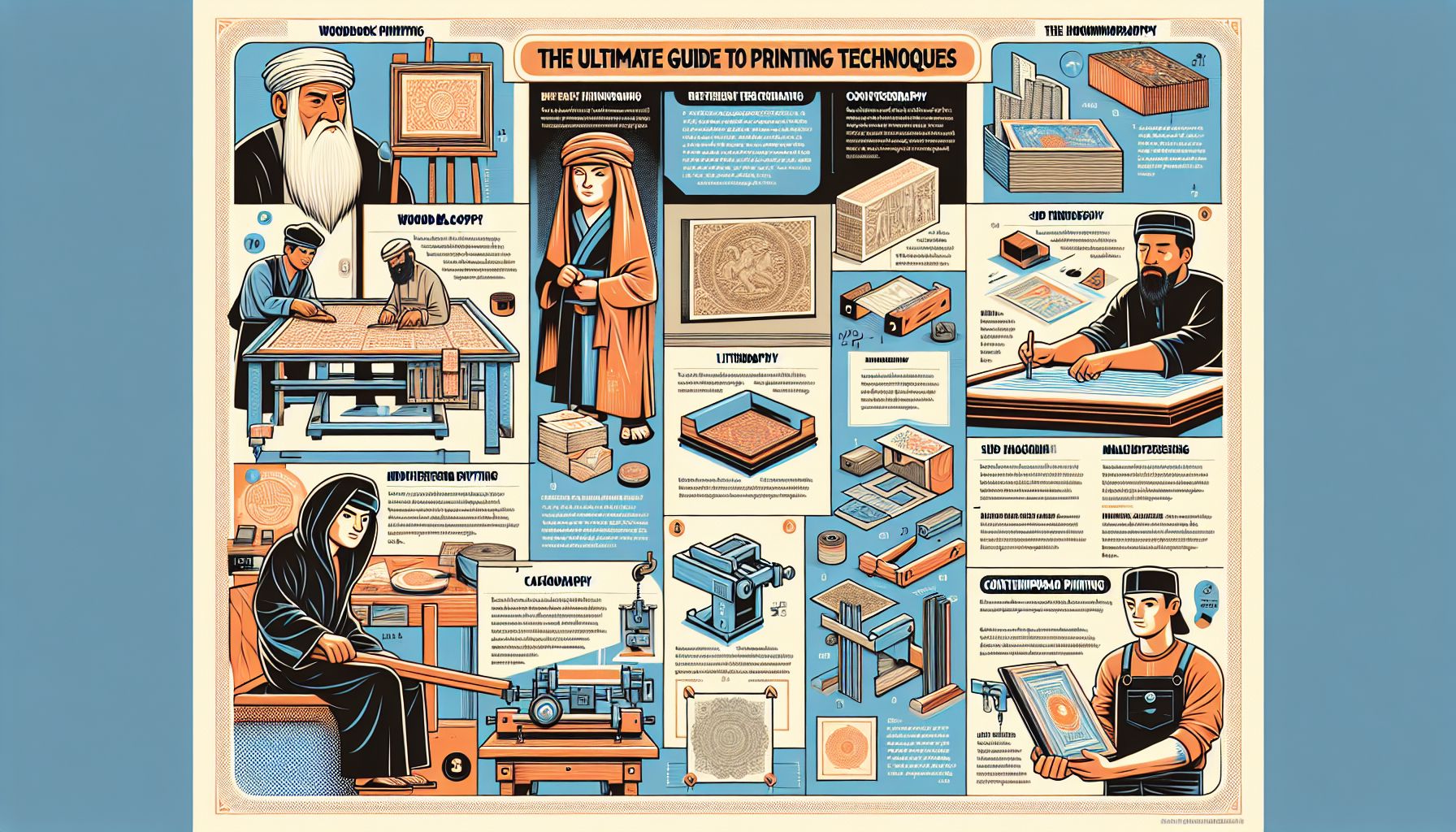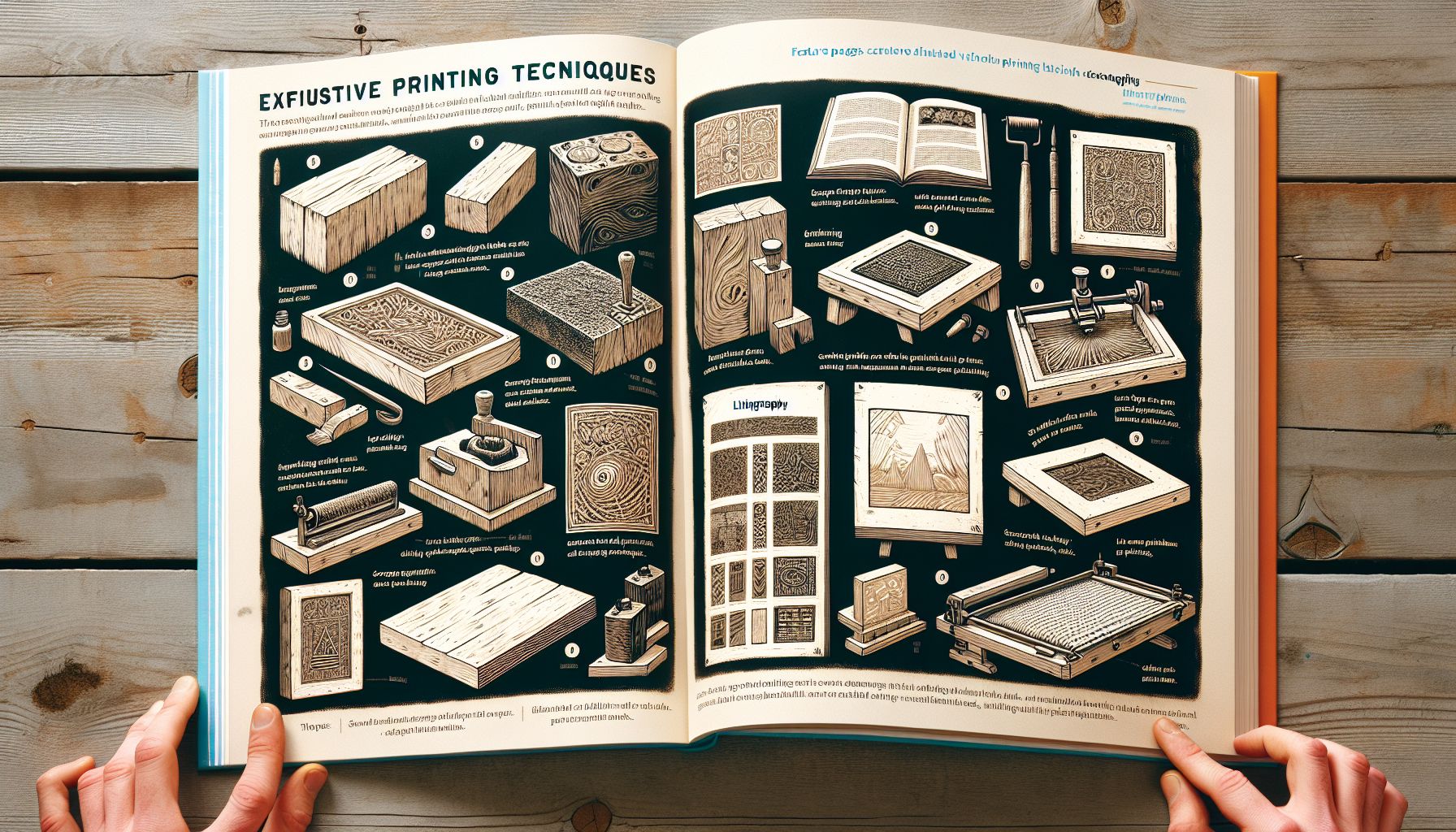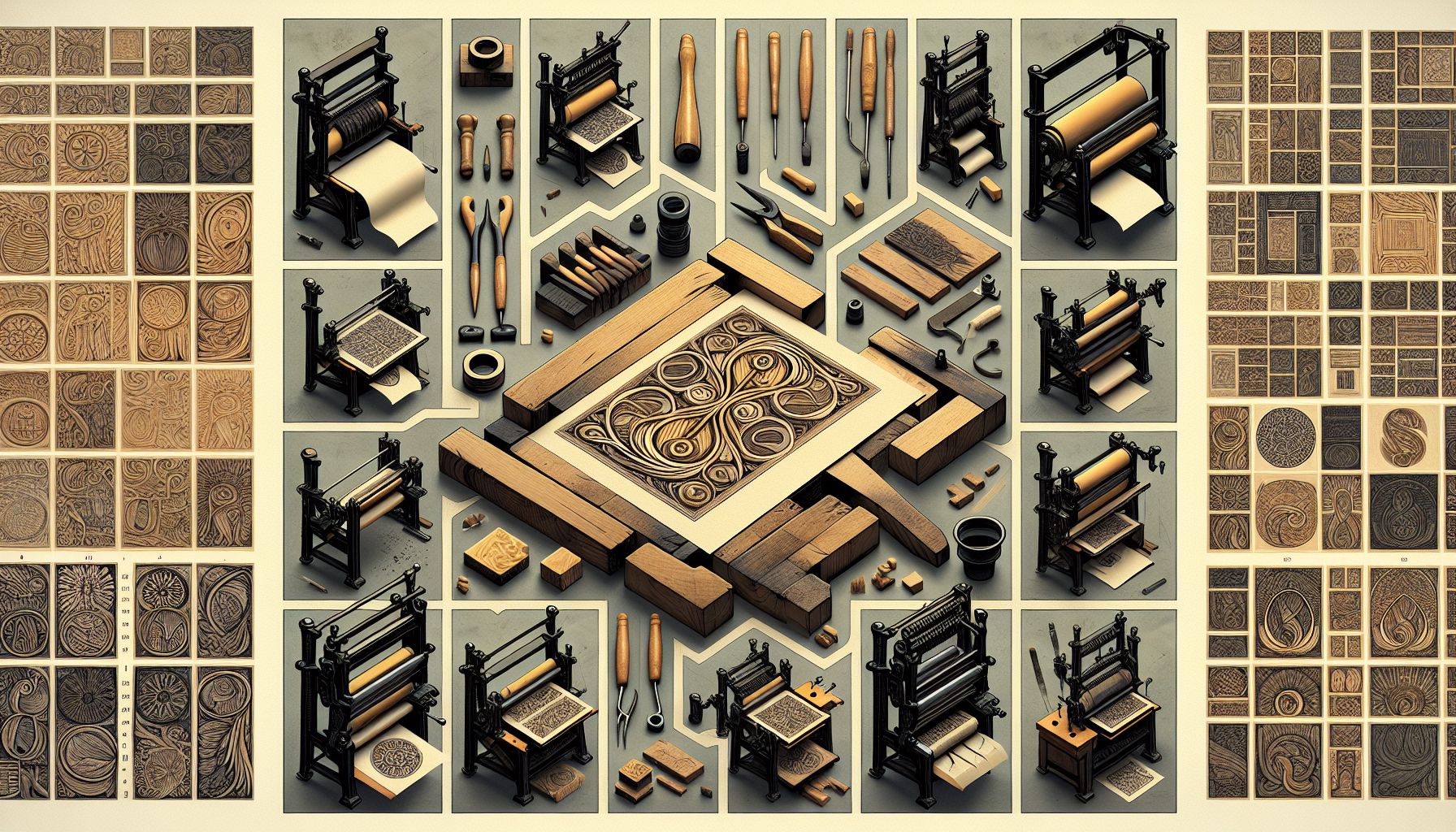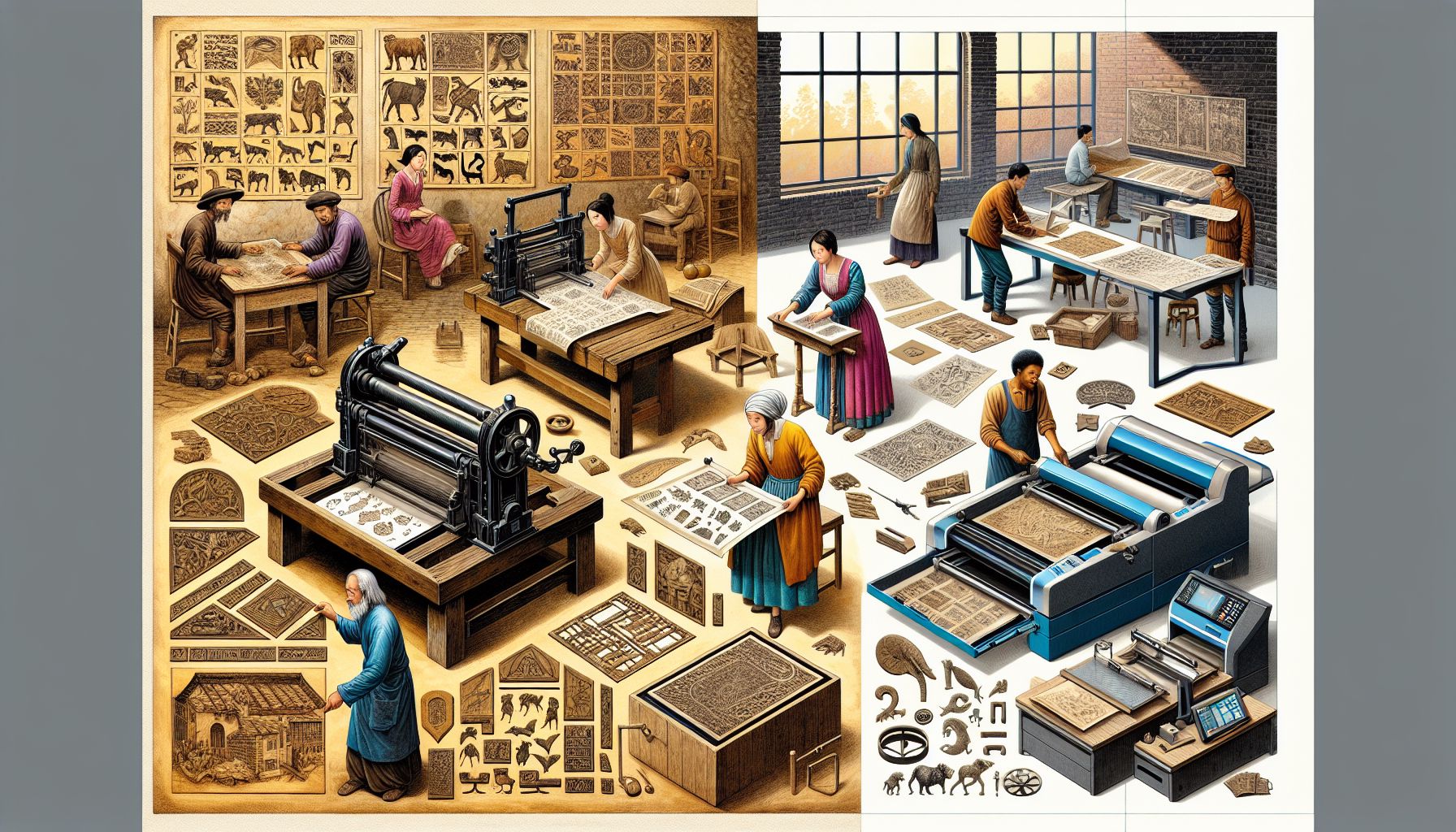Printing has come a long way from its humble beginnings. From the invention of woodblock printing to modern digital techniques, printing has revolutionized the way we communicate and express creativity. Whether you’re a designer, artist, or someone looking for a unique gift, understanding different printing techniques can help you achieve stunning results. In this blog post, we’ll explore various printing techniques that will inspire you to unleash your creative potential.
Introduction to Printing Techniques
Printing techniques involve various methods used to transfer images or text onto different surfaces, such as paper, fabric, glass, and more. Each technique offers unique characteristics, resulting in different levels of artistic expression and aesthetic appeal. Whether it’s the traditional methods or the advancements of print technology, there’s a technique for every artist’s vision.
Let’s delve into some of the most popular printing techniques and discover their artistic possibilities.
1. Relief Printing
Relief printing is one of the oldest and most widely used printing techniques. It involves carving away the background of a surface (usually wood or linoleum) and leaving the raised surface to be inked and printed. The raised surface transfers the image when pressed against paper or fabric.
-
Woodblock Printing: Woodblock printing originated in ancient China and Japan and involves carving an image onto a block of wood. The raised surface is then inked and pressed onto paper or fabric, leaving a unique impression. Woodblock printing is renowned for its intricate details and beautiful textures.
-
Linocut Printing: Similar to woodblock printing, linocut printing uses a linoleum block instead of wood. Linoleum is softer and easier to carve compared to wood, allowing for more fluid and expressive designs. Linocut printing is popular among artists who enjoy bold, graphic illustrations.
2. Intaglio Printing
Intaglio printing involves incising or engraving an image into a surface, typically a metal plate. The ink is then applied to the incised areas and wiped away from the surface, leaving ink only in the recessed grooves. The plate is pressed onto paper, transferring the image. Intaglio printing offers great versatility and precision in capturing intricate details.
-
Etching: Etching involves covering a metal plate (usually copper or zinc) with an acid-resistant ground. The artist then scratches or draws the image onto the ground, exposing the metal. When the plate is submerged in acid, it bites into the exposed areas, creating recessed lines. After removing the ground, the plate is inked, wiped, and pressed onto paper.
-
Engraving: Engraving is a technique where the artist uses sharp tools to incise an image directly into a metal plate. The incised lines act as tiny grooves to hold the ink, which is then transferred to paper using a printing press. Engraving allows for exceptional detail and is commonly used for banknote printing and fine art reproductions.
3. Planographic Printing
Planographic printing, also known as lithography, involves printing from a flat surface. Unlike relief and intaglio printing, the image area and the non-image area are at the same height and level. The image is created using the repulsion of oil and water. Planographic printing offers an exceptional range of tonal values and subtle color blends.
-
Offset Lithography: Offset lithography is the most common form of commercial printing. It utilizes a plate where the image areas attract ink and non-image areas repel ink using a combination of oil and water. The image is transferred from the plate to a rubber blanket and then to the paper. Offset lithography allows for high-quality reproductions with precise color matching.
-
Serigraphy (Screen Printing): Serigraphy, also known as screen printing, involves creating a stencil on a fine-mesh screen. Ink is then forced through the open areas of the stencil using a squeegee, transferring the image onto paper or fabric. Serigraphy is highly versatile, allowing for vibrant colors and bold designs. It is popular for printing on textiles, posters, and custom apparel.
4. Digital Printing
In recent years, digital printing has gained immense popularity due to its efficiency, flexibility, and high-quality results. Digital printing utilizes computers to directly transfer an image onto various surfaces without the need for printing plates or screens. It offers quick turnaround time, cost-effective solutions, and the ability to reproduce complex designs with precision.
-
Inkjet Printing: Inkjet printing is a widely used digital printing technique. It involves spraying tiny droplets of ink onto the printing surface through a print head. Inkjet printers are capable of producing highly detailed and vibrant prints, making them popular among photographers and artists.
-
Dye-Sublimation Printing: Dye-sublimation printing is commonly used for fabric printing and customized merchandise. It utilizes heat to transfer dyes onto synthetic fabrics, resulting in vibrant and permanent prints. Dye-sublimation is known for its ability to produce intricate and continuous-tone images.
Conclusion
Printing techniques offer a plethora of options for artists, designers, and anyone with a creative spirit. Whether you prefer the traditional charm of relief and intaglio printing or the versatility and precision of planographic and digital techniques, there’s a method to suit your artistic goals.
As technology continues to progress, new printing techniques and innovations will undoubtedly appear, expanding creative possibilities even further. So, unleash your imagination, experiment with different printing techniques, and witness your visions come to life in stunning detail and vibrant colors. Happy printing!
Have you tried any of these printing techniques? Share your experiences and favorite method in the comments below!



